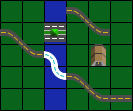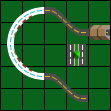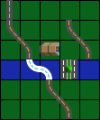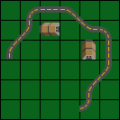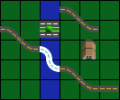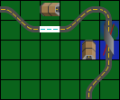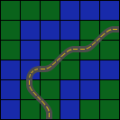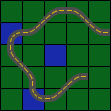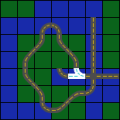Difference between revisions of "Catalogue of composite track elements"
| Line 62: | Line 62: | ||
</gallery> | </gallery> | ||
| − | ==== | + | ====Big 90 degree corners==== |
<gallery> | <gallery> | ||
| Line 84: | Line 84: | ||
</gallery> | </gallery> | ||
| − | ===270 degree | + | ====Big 180 degree Corners==== |
| + | |||
| + | <gallery> | ||
| + | File:Big180Corner.png|There are multiple ways to set it up with the chicanes | ||
| + | </gallery> | ||
| + | |||
| + | ===270 degree corners=== | ||
<gallery> | <gallery> | ||
File:270Turn.png|Quite 360° even | File:270Turn.png|Quite 360° even | ||
| + | File:270Turn-b.png|Not truly 270°, possible to do a 180° and a 90° in opposite directions. The trick is always to go over all three chicanes, but to leave through the middle one. | ||
</gallery> | </gallery> | ||
Revision as of 20:08, 20 March 2024
Introduction
A composite track element can be seen as a track element that is built up out of a combination of different track elements. In order to execute a composite track element, you are not supposed to follow the road. Usually, leaving the road is not beneficial since it would let your car crash, sink or slow down dramatically in the grass. But this isn't always the case.
The chicane is the most important track element to build up composite track elements. The chicane track element acts as if it has an asphalt surface all over. This allows the driver to leave road without slowing down, making it ideal to build up a composite track element by adding other track elements to the chicane(s).
Here we see an example.
If we focus on the upper right section of the track, going through the tunnels, knowing the chicane acts like it has asphalt all over, we can imagine it as such:
This is the track element like it would actually be taken. It can be called a simulated track element. And this track element cannot be made unless we leave the road.
Notice how these two tunnels could be replaced with anything, for example, a section of a pipe, since both of those tunnels aren't connected to the road at all. This is what could be called an open arrangement.
There is also a half open arrangement. If we modify the upper right section of the track, we can transform it into a half open arrangement. The path that would be taken is quite the same. But only one of the two tunnels could be replaced with the middle section of a pipe since the second tunnel is connected to the road. However, such a set up might often be simpler and take up less room.
Open and half open arrangements can be taken in both directions. Though the simulated track element may feel quite different when taken from the other direction.
In these examples, all the chicanes are still part of the track. They are just driven differently. But it is also possible to add a chicane which isn't part of the track at all, with the goal of executing the simulated track element on that chicane. The chicane becomes a part of the shortcut.
The chicane is not the only option to create a simulated track element. Other track elements such as the crossroad or the split could also be used instead of chicane(s).
The catalog
A catalog consisting of examples of open and half open arrangements. Rotations and reflections of the same composite track element are usually omitted.
When setting up a composite track element, it is important to make sure that chicanes don't touch, even diagonally, unless it was intended to go straight from one chicane to the other.
When executing a composite track element, you may skip up to two track elements without receiving penalty time.



